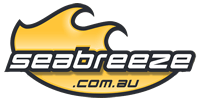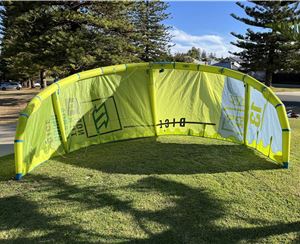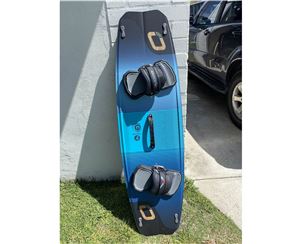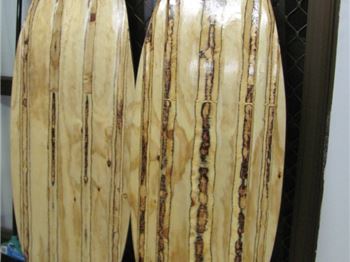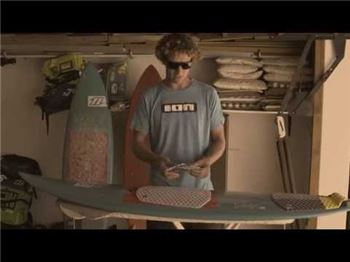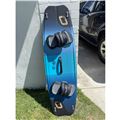Meet Dave Kay - Airush design of TwinTips and more...
Airush Kiteboarding recently added Dave Kay (DK) to their design team, taking on the responsibility of Design Engineering and Product Design. He now heads up the Airush Prototype Lab in Cape Town, focusing on the design of twintips and control systems. We caught up with DK to get the low-down, and welcome him to The Collective…

Can you give us a bit of background on yourself?
I was born in New Zealand and grew up in a tiny beachside town in the North of the North Island. Being so close to the beach meant it was kind of natural that I started getting into board sports. Bodyboarding, Skateboarding, Skimboarding, Windsurfing, and Snowboarding have all been part of my life over the years. Since 2000, it has been all about Kiteboarding and more recently Cable Wakeboarding has become a real passion.
How did you get into product design?
Kind of a funny question, I don't actually recall a time where I wasn't designing or building something. I remember back to my Workshop classes at high school, where my friends and I made skimboards and skateboards, and my Tech drawing classes where I would sketch and design skate ramps, all later built on a mates' family farm.
After high school, I trained in Electronic Engineering, which (like all engineering programs) gave me a great grounding in process, materials, and software. This has helped me through the rest of my career.
I built my first kiteboard in 2000, and by late 2001 I'd started my own kiteboard factory and brand. My wife and I ran this business successfully in New Zealand for 10 years, before a large brand asked me to take over management of their complete board program. I then spent 5 years living in Asia, close the factories, and learned a considerable amount about how this side of the business works.

What do you find most rewarding about your career?
The chance to work with my heroes, the greatest athletes in our sport, and see them succeed with the products I've designed.
Who and what have been your main inspirations and influences?
When I was maybe 11 or 12 years old, I first met surfboard shaper Roger Hall (his factory being based in my home town.) Later down the line, I was lucky enough to have worked closely with Roger on a number of projects - hollow wooden surfboards, solid wood tow boards, and some very interesting kite surfboards. Roger's design flow, work ethic, and fine craftsmanship have been the gold standard for me over the years.
I'm also very inspired by the software development industry at the moment, perhaps a strange statement from a water sports hardware developer. The software is now tightly ingrained in all parts of modern life. It has become this way due to a near perfect development process of fast prototyping, rapid development and rigorous testing, with iteration times measured in minutes - not weeks, months or years.

What made you want to work with Airush and looking at your personal design philosophy, what do you feel differentiates them from the pack?
I first met Clinton Filen, Airush Brand Director, at a kiting event in Europe a few years ago when I was working as a board designer for another kite brand.
Compared to the very cost-driven corporate environment I was working in at the time, I found his personal and business focus on innovation, design, and quality very refreshing. I decided after that first meeting that I wanted to work at Airush - it's just taken a few years for that plan to come together.
Airush has made one of the largest investments in the industry in prototyping and development - with their very own well spec'd development lab. Stocked with sewing machines, three different CNC routers, two 3D printers along with a board press, vacuum lamination systems and a decent sized space to house it all. Airush has the ability to build any type of prototype, in-house, in a very short time frame - something I could only dream about in my previous position.
With the office and lab only 300m from the beach, we can test these prototypes just as fast as we can make them. Any good designer knows that iteration is the key to good products - design, build, test and repeat. The shorter that cycle, the better the product.

How have you been enjoying the Cape Town location?
My wife and I arrived in Cape Town two years ago and have loved every moment since. We live walking distance to the beach and a short bike ride or walk from the office. We often surf before work, kite every day we can, and have the choice of two different cable parks within 45min. Combine all of this with the amazing vibe that events like King of the Air bring to the city, and it is as close to paradise as I have come to yet.
How involved are you with the Airush team riders?
Riders are an important part of the development process - without athletes pushing the top end of the sport, changing the requirements, and breaking everything along the way, we would still be riding the same equipment from 2002.
Coming back to the development lab, the ability to make anything a rider might think of, and taking straight to the beach, is the unique part of being on the Airush Team - one I'm hoping to have an even bigger impact on.

What are you looking for in development that differentiates a great board from an average one?
There is a lot more that goes into a great board than just the graphics (Although, I believe Airush consistently produces some of the best graphics in kiting).
I spend a lot of time on flex tuning - there is some hidden relationship between outline, rocker, and flex that produces the 'magic ride' for any given design. With flex, I get two options to tune; laminate and thickness profile, both of which have an impact on the rocker. I tend to set an outline for a particular board then, chase the ride I'm looking for with tiny changes (less than 0.5mm) in thickness. On average, it takes 3-4 prototypes to get a board completely dialed in.

You will also be focusing on control bars; do you see a lot of development coming in this area?
The more I work in kiting, the more I believe that our 'interface systems' - bindings, harnesses, and control bars - are where the big gains in performance are coming. The closer the item is to the rider; the more care needs to be taken in terms of fit and function.
From my personal point of view, control systems have gotten more and more 'tech-rich' over the years at the expense of the riders' experience. Simple, clean, well-built, and easy to use are the ideals to follow. It may sound easy, but for sure, it's much more difficult as a designer/engineer to keep modern function in a control bar and not end up with excess features and weight.
You have been in the industry for a while, zooming out, where do you see the next big advances in the sport?
I've been around long enough to see all the progressions - the start, into bigger and bigger jumps, the rise of wakestyle, the pushing of strapless in the surf, and more recently, the foiling revolution.
Access and ease of use have been the key at each of these steps - it may sound strange, but in kiting 'high performance' is usually tightly coupled with 'easy to use' - as the easier the equipment is for a particular style, the more the athletes can push the progression.
In the near future, I see more digital manufacturing being applied to all of our equipment - with a more direct translation of designers' requirements into end products. This is a side on the industry I believe Airush are in a good position to lead.
